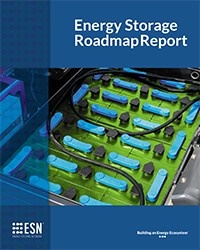Energy Storage Roadmap Report
The term “energy storage” is becoming more ingrained in the global vernacular. From first world nations to developing nations, the common energy consumer is discovering – and capitalizing on – the emerging value proposition of energy storage: the battery.
Historically, the vast electrical grid with its centralized power plants has provided excessive electricity to industry, communities, and homes, otherwise referred to as the built environment. The grid has been used to convey an ample supply of electrons to all the “nodes” of demand that tap into the grid and require electrical power for lighting lights, pressing metal, cooking, or cooling food.

The Energy Storage Roadmap Report aims to provide comprehensive research, technical and trend data with expert opinion to answer the following questions:
•• Will improvements in energy storage continue to drive performance and price per kWh down, and at what point will it reach parity with existing technology options?
•• What market adjustments are required to allow energy storage systems, which can be both a load and a generation resource, to contribute their full benefits to the grid?
•• How should energy storage projects be financed (e.g., rate base, independent power producers, etc.)?
•• What role will public utility commissions (PUCs) need to play in developing policies or approving projects?
•• How can utility providers create new revenue streams and business models using energy storage systems?
In order to comprehensively and uniquely answer questions like these, ESN has performed extensive research; reviewed professional research materials, market forecasts, and other data; interviewed experts; and established essential criteria for scenario planning of the economic implementation of energy storage to the built environment.

